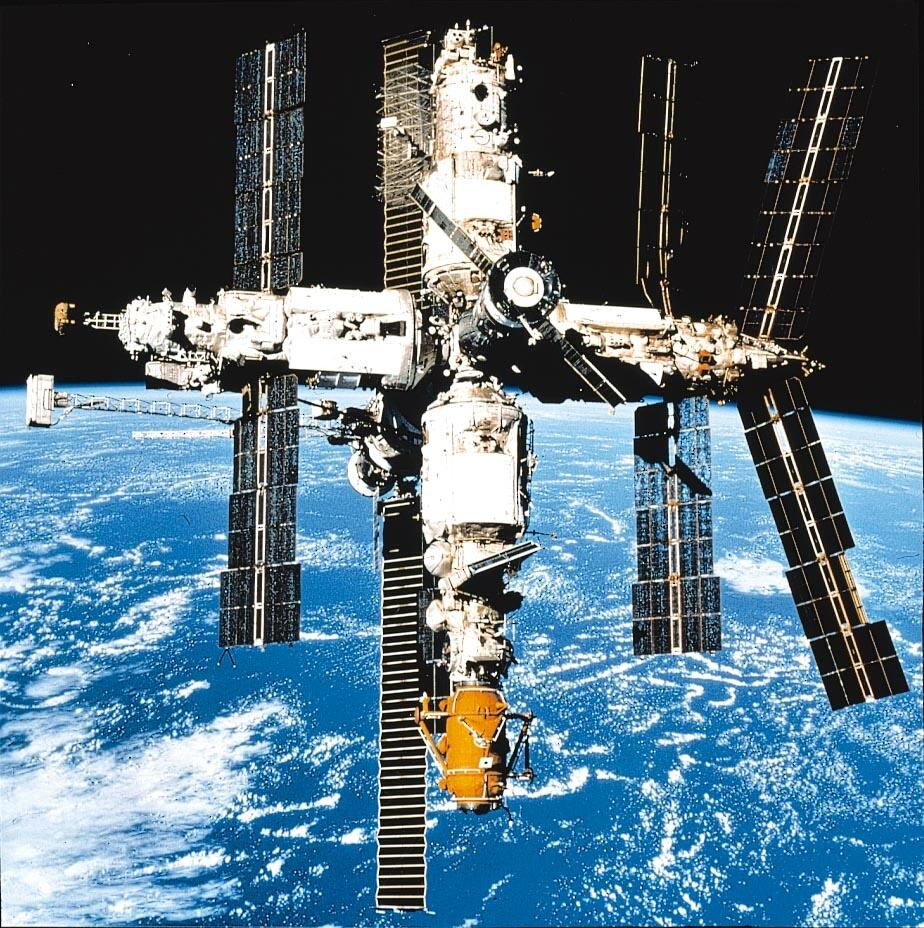However, for me, the launch is not the most exciting part of the mission. Yes, it means there are now 6 people in space, but that is less than a full space shuttle crew used to be. It is not the first Shenzhou flight with a crew of 3. Even though this is a first for China, Liu Yang is only the 56th woman to travel to space.
The most exciting part of this mission will be the docking with Tiangong 1, and the crew transferring between the two craft. This will happen around the 21st of June, and once this happens mankind will once again have two occupied space stations.
Now, it is not the first time in history this has happened, but it is still a very notable event. The 3 times this has happened before were in 1998, 1999 and 2000, while the Russian Mir station was being wound down and replaced by the International Space Station (ISS) project. Each of these periods of double occupation lasted only 5-7 days and involved the first 3 brief space shuttle flights to the ISS, during the last two permanent crews and then one final visiting mission to Mir.
This time it is different. It is different because the ISS is not being decommissioned. If things go to plan over the next few years, the ISS will remain permanently occupied while China develops its own permanent space presence. Manned space is starting to be decentralized!

Here is a bit of history on manned space stations:
Up to 1971: zero, unless you count the moon landings from 1969
- No space stations yet.
1971: one, but only one crew for 22 days.
- Salyut 1 was launched by USSR in April, and after one partially successful docking, the first 3 man crew entered the station from Soyuz 11 in June and stayed 23 days. This was not a successful mission either though, because tragically, this crew died during their return to earth.
1972: back to zero. The last moon landing also happened this year.
1973-1974: between zero and one, sequentially, each occupied by one crew at a time
- Skylab was launched by the USA, and had 3 manned crews, with gaps in between. It was occupied for a total of 171 days over 9 months. The last crew left before the USSR's next space station was launched.
1974-1986: between zero and one, sequentially, with crews receiving short term visitors.
- Salyut 3 thru 5 each launched by USSR after the final visit to the previous one. These were manned numerous times, each time for less than 2 months, with gaps in between. After 1977, Salyut 6 and 7 were occupied by several crews for up to 8 months at a time. Unlike previous space stations, Salyut 6 and 7 had two docking ports, and resident crews received visitors during their stay, however there were still gaps for months at a time in between crews.
1986: two operational space stations, but only 1 occupied at a time
- Mir was launched by the USSR, and Soyuz T-15 flew to both Mir and briefly to Salyut 7 before returning to Mir. This was the first time a new space station was commissioned before its predecessor was abandoned, but Mir was unoccupied while the crew visited Salyut 7 for the last time.
1987-1999: one, constantly occupied with overlapping crews. (one exception)
- Mir was progressively expanded by the USSR and later Russia, and visited by Cosmonauts from 10 different countries and from 1995, Astronauts from visiting American space shuttles. During this time, new crews arrived before the previous crew departed, so the space station was constantly occupied, although Mir was left unoccupied for one four month period in 1989, after which Mir was constantly occupied for 8 days short of 10 years.
1998, 1999, 2000: two, for three brief moments each less than a week, then zero
- The International Space Station (ISS) had its first compartment launched in 1998 and started receiving brief space shuttle visits for up to 6 days 18h, including two flights while Mir remained occupied. In August 1999, Mir (and outer space in general) was left unoccupied for the first time since 1989. One final, privately funded mission to Mir lasted for 2 months in 2000, during which time the ISS was visited by a third space shuttle for 5 days. Mir was subsequently decommissioned and deorbited.
2000-present: one, 12 years constantly occupied with overlapping crews
- After two more brief American space shuttle visits, man's permanent presence in outer space was re-established by Expedition 1, arriving in a Russian Soyuz. During this time, there have been up to 10 people at the ISS when space shuttles visited, twice bringing the total number of people in space briefly up to 13. This happened once in 2001 when space shuttle STS-100 and Soyuz TM-32 visited in quick succession with the space shuttle landing while the Soyuz was en-route, and again in 2008 while China's unrelated Shenzhou 7 mission was in space. Currently, ISS is occupied by Expedition 31 - the 31st crew of continuous occupation.
Now: there will be two, briefly, and then one will remain
- The ISS remains occupied by Expedition 31, while Tiangong 1 will receive its first brief crew, Shenzhou 9. This will be the first time in 12 years and the first time since outer space was last abandoned that mankind has had two occupied space stations.
No comments:
Post a Comment